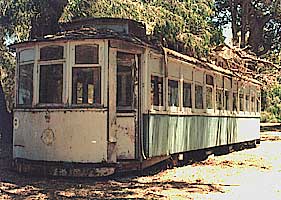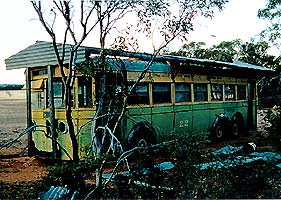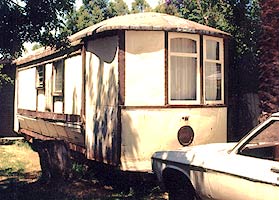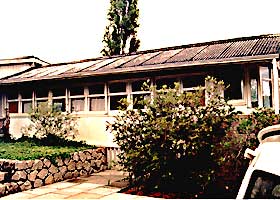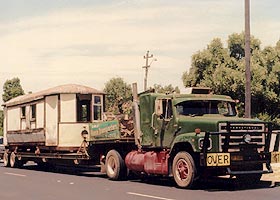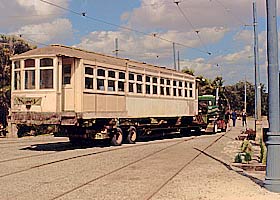
Restoration:
|
Shown here is Perth G35, near Albany. A layer of metal sheeting over the original roof afforded it a good degree of protection. Some of the tram is in fact further inside the house than this visible portion
More tram bodies have been found than needed for the tramway museum. The Society's Collection Policy, together with an assessment of the condition of the individual body, helps to assign a priority for each one. In some cases all that can be done is to retrieve parts for use in the restoration of other bodies. When a decision has been made to acquire a tram body, the next task is to transfer it to the Society's storage area.
|
ConservationRetrieved bodies join the queue awaiting restoration for their return to active service. [This queue is currently quite a lengthy one.] In the meantime they often act as makeshift storage areas. Nearly all retrieved bodies are in undercover storage, and are fully protected from the weather.
In some cases additional conservation work is done to stabilise the structure. |
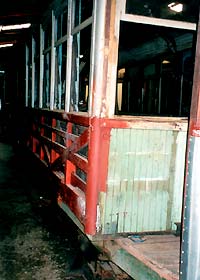
|
RestorationThe restoration process is a long one. As much material as possible is re-used from the original, but the passage of time sometimes makes this difficult, or undesirable from a safety viewpoint. Western Australian trams were largely of wooden construction [with varying amounts of metal supports], which can be both an advantage and a disadvantage for restoration. At its very briefest, the process follows these lines:
|
||||||||||||||||||||||||
| - | - |
|
